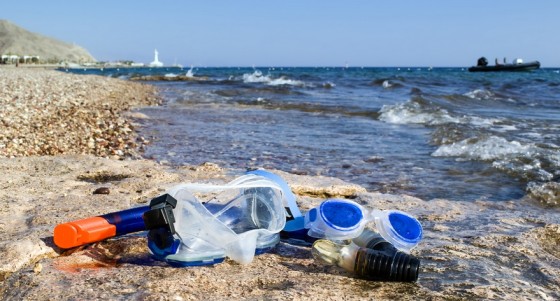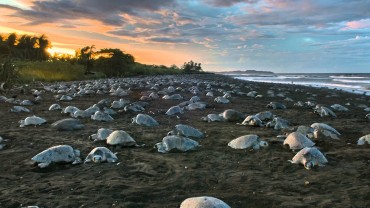 There is a losing battle in saving coral reefs worldwide, but a drug made for humans might be able to help corals fight the White Plague.
There is a losing battle in saving coral reefs worldwide, but a drug made for humans might be able to help corals fight the White Plague.
Corals reefs are an invaluable part of the marine ecosystem, fostering biodiversity and protecting coastlines. But coral reefs are increasingly endangered. Pathogenic bacteria, along with pollution, global warming and harmful fishing practices, are one of the biggest threats to the world’s coral populations today.
One of the solutions to the crisis may lie in human medicine. Prof. Eugene Rosenberg of Tel Aviv University has developed a treatment for coral infected by Thalassomonas loyana, otherwise known as White Plague disease. This deadly bacterium infects 9 percent of Favia favus corals on the Eilat coral reef in the Red Sea and readily transmits the disease to nearby healthy corals.
Rosenberg’s treatment uses viruses that infect bacteria by injecting genetic material into the bacteria, a therapy originally developed to treat bacterial infections in humans. In this case, Rosenberg and his team isolated a virus called BA3, one of a category of viruses known as phages. After laboratory experiments showed that BA3 had the ability to kill off White Plague disease, field experiments in the Gulf of Eilat demonstrated that the treatment stopped the progression of the disease in infected corals and prevented the spread of the disease to surrounding healthy corals as well.
These findings were presented at the American Society for Microbiology’s general meeting in June.
Treating bacterial infections in corals is no easy task. Because corals don’t produce antibodies like humans, they can’t be immunized. And pharmaceutical antibiotics are not a viable option because the treatment releases the drugs into the sea, harming the marine environment.
The researchers applied their treatment to two groups of diseased coral, each surrounded by a circle of healthy corals. In the test group, the researchers injected the virus into the area at a concentration of 1000 per milliliter. The control group did not receive the virus.
After 24 hours, the difference in the outcome was highly significant, says Rosenberg. In the test group, the infection of the diseased coral ceased its progression, and the disease did not spread to the surrounding healthy corals. In the control group, however, the White Plague disease progressed rapidly in the original infected coral and spread to seven out of ten of the surrounding healthy corals.
The next step is to develop an effective way to spread the viruses over large areas of an infected coral reef. Sufficient amounts of these viruses can be easily manufactured in the laboratory. After that, it’s a question of technology and funding, Rosenberg adds.
Image of coral reef, Eilat from Shutterstock



